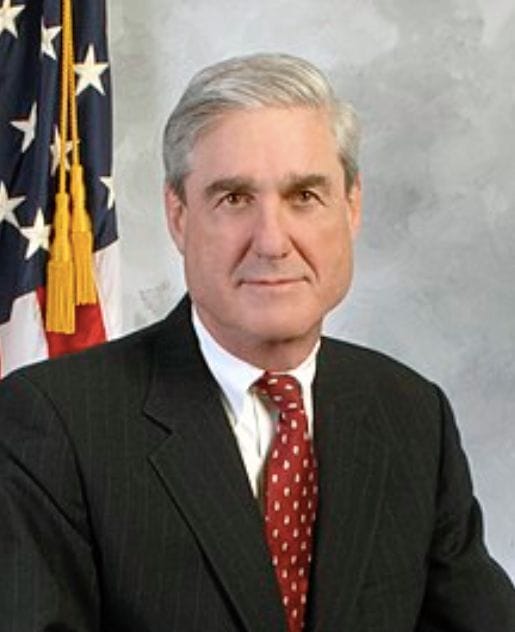With Special Counsel Robert Mueller’s probe over, we have been told there will be no Trump-Russia related indictments. One of the many unknowns, since the report has yet to be released, is how far Mueller’s investigation took him in the direction of a key question: How did the false Trump-Russia narrative become so embedded not only in our media landscape, but also within the FBI? Did some intel officials violate policies or even laws?
The following story was first published in The Hill in February 2018.
For all the debate over the House Republican memo pointing to alleged misconduct by some current and former FBI and Justice Department officials, one crucial point hasn’t gotten the attention it deserves. And it relates in an unexpected way to special counsel Robert Mueller. The point is: There are strict rules requiring that each and every fact presented in an FBI request to electronically spy on a U.S. citizen be extreme-vetted for accuracy — and presented to the court only if verified.
There’s no dispute that at least some, if not a great deal, of information in the anti-Trump “Steele dossier” was unverified or false. Former FBI director James Comey testified as much himself before a Senate committee in June 2017. Comey repeatedly referred to “salacious” and “unverified” material in the dossier, which turned out to be paid political opposition research against Donald Trump funded first by Republicans, then by the Democratic National Committee and the Hillary Clinton campaign.
Presentation of any such unverified material to the Federal Intelligence Surveillance Act (FISA) court to justify a wiretap would appear to violate crucial procedural rules, called “Woods Procedures,” designed to protect U.S. citizens.
Yet Comey allegedly signed three of the FISA applications on behalf of the FBI. Deputy Director Andrew McCabe reportedly signed one and former Attorney General Sally Yates, then-Acting Deputy Attorney General Dana Boente and Deputy Attorney General Rod Rosenstein each reportedly signed one or more.
Woods Procedures
Woods Procedures were named for Michael Woods, the FBI official who drafted the rules as head of the Office of General Counsel’s National Security Law Unit. They were instituted in April 2001 to “ensure accuracy with regard to … the facts supporting probable cause” after recurring instances, presumably inadvertent, in which the FBI had presented inaccurate information to the FISA court.
Prior to Woods Procedures, “[i]ncorrect information was repeated in subsequent and related FISA packages,” the FBI told Congress in August 2003. “By signing and swearing to the declaration, the headquarters agent is attesting to knowledge of what is contained in the declaration.”
It’s incredible to think of how many FBI and Justice Department officials would have touched the multiple applications to wiretap Trump campaign adviser Carter Page — allegedly granted, at least in part, on the basis of unverified and thus prohibited information — if normal procedures were followed. The FBI’s complex, multi-layered review is designed for the very purpose of preventing unverified information from ever reaching the court. It starts with the FBI field offices.
According to former FBI agent Asha Rangappa, who wrote of the process last year in JustSecurity.org, the completed FISA application requires approval through the FBI chain of command “including a Supervisor, the Chief Division Counsel (the highest lawyer within that FBI field office), and finally, the Special Agent in Charge of the field office, before making its way to FBI Headquarters to get approval by (at least) the Unit-level Supervisor there.” At FBI headquarters, an “action memorandum” is prepared with additional facts culled by analytical personnel assigned to espionage allegations involving certain foreign powers. Next, it goes to the Justice Department “where attorneys from the National Security Division comb through the application to verify all the assertions made in it,” wrote Rangappa. “DOJ verifies the accuracy of every fact stated in the application. If anything looks unsubstantiated, the application is sent back to the FBI to provide additional evidentiary support – this game of bureaucratic chutes and ladders continues until DOJ is satisfied that the facts in the FISA application can both be corroborated and meet the legal standards for the court. After getting sign-off from a senior DOJ official (finally!).”
There’s more
But there are even more reviews and processes regarding government applications for wiretaps designed to make sure inaccurate or unverified information isn’t used.
In November 2002, the FBI implemented a special FISA Unit with a unit chief and six staffers, and installed an automated tracking system that connects field offices, headquarters, the National Security Law Branch and the Office of Intelligence, allowing participants to track the process during each stage.
Starting March 1, 2003, the FBI required field offices to confirm they’ve verified the accuracy of facts presented to the court through the case agent, the field office’s Chief Division Counsel and the Special Agent in Charge. All of this information was provided to Congress in 2003. The FBI director at the time also ordered that any issue as to whether a FISA application was factually sufficient was to be brought to his attention. Personally.
Who was the director of the FBI when all of this careful work was done?
Robert Mueller.
Perhaps ironically, Mueller isn’t in charge of the investigation examining the conduct of FBI and Justice Department officials and whether they followed the rules he’d carefully implemented 15 years before. Instead, Mueller is leading the probe into Russia’s alleged illegal connections with Trump associates.
Congress is looking at the wiretap process. With so much information still classified, redacted and — in some cases — withheld, there is much we don’t know. Perhaps we will eventually learn that there’s a good reason unverified material was given to the court. Maybe there was no violation of rules or processes.
But there’s a reason Woods Procedures exist in the first place. They aren’t arcane rules that could have been overlooked or misunderstood by the high-ranking and seasoned professionals working under the Obama and Trump administrations who touched the four Carter Page wiretap applications and renewals. And unless they’ve secretly been lifted or amended, Woods Procedures aren’t discretionary.
In the past, when the FBI has presented inaccuracies to the FISA court, it’s been viewed so seriously that it’s drawn the attention of the Department of Justice Office of Professional Responsibility, which investigates Justice Department attorneys accused of misconduct or crimes in their professional functions.
]]>



I just shared this to my FB friends…
Attkisson is a responsible reporter who digs for facts, and lets them speak for themselves.
She discovered the FBI’s formal “Woods Procedures” for investigating each instance of unvetted information found in any FISA-Court surveillance application. Not one unvetted piece of information is allowed in a FISA application. This prohibition is taken so seriously that formal investigations are launched for any violation.
Now, think about the Steele Dossier. 100 percent UNVERIFIED. (Since it is fiction, it is also 100 percent unverifiABLE.) HOW MANY FBI OFFICIALS signed off on using the Steele Dossier as evidence of spying by Donald Trump? Rosenstein comes to mind. Mueller? Comey? Strozk? McCabe? Who else? The Woods Procedures mandate investigations of every unverified allegation that goes into a FISA application, according to Atkisson.
Great stuff.
What Mark says.
We have very serious problem in American politics. The top law men are corrupt. how do we save ourselves from a complete takeover by them. They have the big guns.
Sharyl, I believe the Woods procedures you describe were actually initiated as a result of FISA violations by Mueller himself. He was brought before the FISA court and admonished for the FBI violations. He, more than anyone is aware of Woods
Why hasn’t the FISA court court judges rebuke or admonished the FBI and DOJ yet for submitting unverified evidence????
The judges silence on this matter is telling….
I’ve heard it’s because no actual judge reviewed the application in the first place. There isn’t a judges name attached to the approval and so no judge has come forth to take credit and call for accountability. The entire FISA process has been corrupted. Just look at the approval rate. How many FISA applications are denied. I believe the number is close to 0 which tells you a lot.